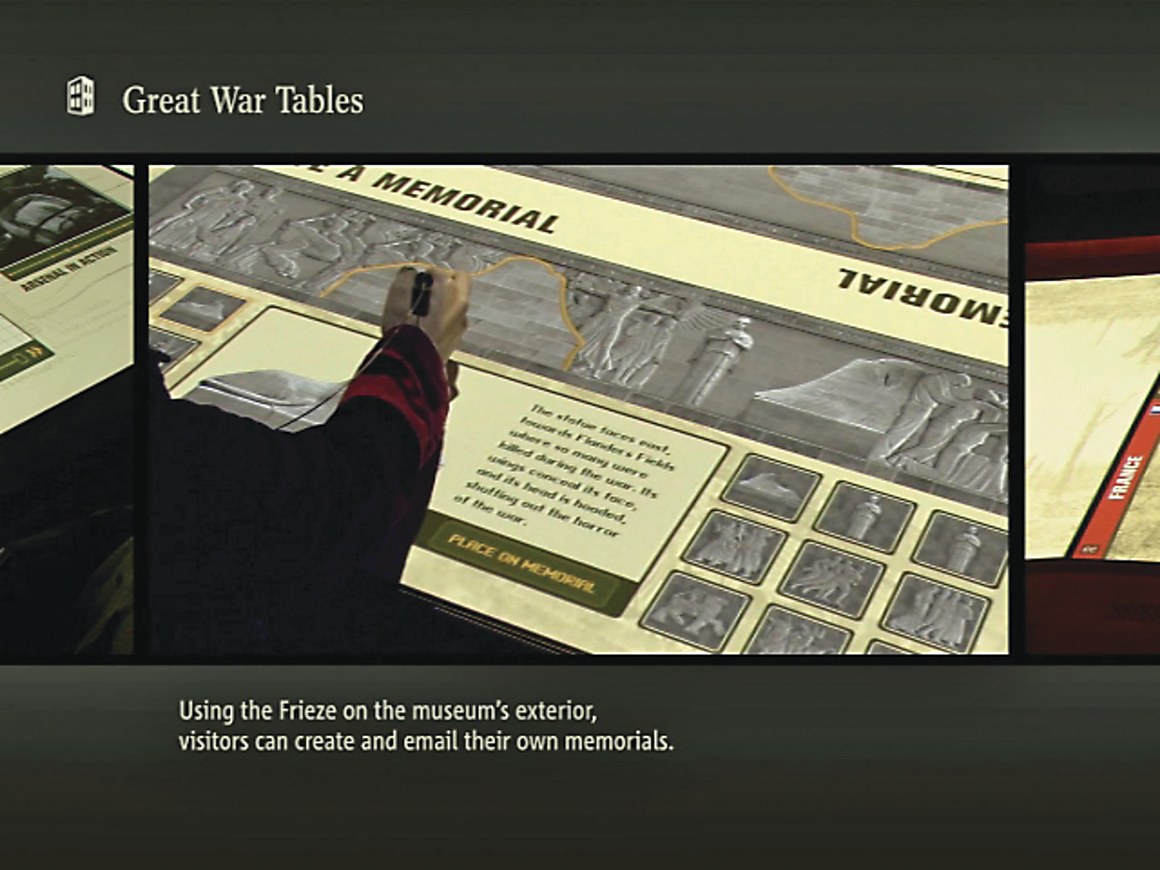









"Encouraging user-generated content by creating a personalized memorial makes this trip to the history museum an enlightening experience." —juror Gabrielle Weinman
"Proof that interactivity and visual storytelling can bring even the driest subjects to life." —juror Jon McVey
Overview: In 2006 the National World War I Museum opened in Kansas City, Missouri in commemoration of those who served in the first World War. At the core of the 30,000-square-foot building are two 26-foot-long interactive tables that give visitors the opportunity to delve deeper into the strategic and technological aspects of the war. Visitors can watch archival video footage, browse photographic collections and learn on their own about military technologies or participate in 24-person group interactive challenges that parallel the military, political and civilian aspects of the global conflict.
• The tables were developed over a year by a team of fifteen.
• Light pens are used as the cursors to make selections on the illuminated tables.
• Created in Flash the tables use C# wrappers to drive and sync video content.
Comments by Jennifer Young and Christian Bannister:
What was the most challenging aspect of the project? "Just as there are challenges unique to designing site-specific interactive media (as compared to online media), group-based interactives have their own unique set of challenges. But, the challenge of developing an activity for twelve unique interfaces that engage with each other for over fifteen minutes was immense.
"We had to account for varying completion durations for different visitors, as well as scenarios with different numbers of visitors (from 2 to 24). We had to make each zone compelling whether the table was full or half empty, and we had to alternate between full-table storytelling sections and activity sections.
"When we originally designed the individual mode of the table we thought each of the twelve interface zones would have the same options: Visitors would be able to access all of the different activities from wherever they sat. The challenge was how to effectively advertise for all the different activities within the interface.
"When we played with different types of attract sequences we began thinking, 'Why not utilize the expansive table to do this?' Both table surfaces are filled with unique content; visitors can make choices about what they want to do by looking around. There's a bonus: It promotes more interaction between people. The tables are proving to be a great way to provide the interaction audiences crave while preserving the social context of a museum experience."
Did you learn anything new during the process? "We learned a lot about how to orient and size videos around a table, how to direct discreet audio to different zones without headphones and how to accommodate visitors in wheelchairs. By far our biggest lesson was the importance of early prototyping and user testing. The more you invest in creating a prototype that's as close as possible to the real thing, the fewer surprises you'll have when you install."